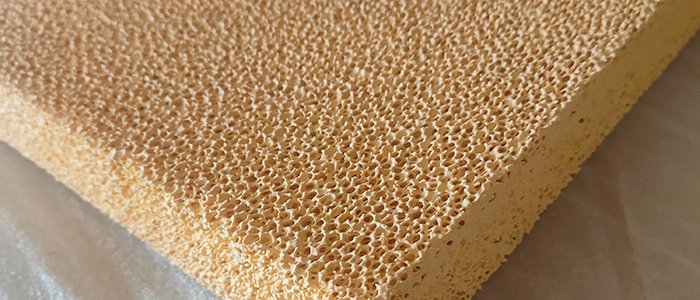Zirconia ceramic foam filters (ZCFFs) have become an essential tool in the metal casting industry. They are designed to remove impurities and improve the quality of castings by providing a clean and homogenous flow of molten metal. ZCFFs come in different mesh sizes and thicknesses, and their selection is critical to the success of any casting operation. In this article, we will discuss the factors to consider when selecting the mesh size and thickness of ZCFFs and provide examples of their application.
Factors to Consider When Selecting the Mesh Size of Zirconia Ceramic Foam Filters (ZCFFs)
The mesh size of ZCFFs refers to the number of pores per inch (PPI) or the number of holes per linear inch (HPLI). The selection of the mesh size is dependent on several factors, including:
1. The Size of the Castings
The size of the casting is critical to the selection of the mesh size of ZCFFs. Large castings require larger mesh sizes to allow for the free flow of molten metal. Small castings, on the other hand, require smaller mesh sizes to prevent the metal from splashing and causing defects on the surface of the casting.

2. The Type of Metal
The type of metal being cast also plays a significant role in the selection of the mesh size of ZCFFs. Different metals have different flow characteristics, and the mesh size must be selected to optimize the flow rate. For instance, aluminum and copper alloys require finer mesh sizes than steel and iron alloys due to their higher fluidity.
3. The Level of Impurities
The level of impurities in the molten metal also influences the selection of the mesh size of ZCFFs. Higher levels of impurities require finer mesh sizes to trap and remove them effectively. For instance, casting titanium alloys requires filters with PPIs ranging from 30 to 60 due to the high level of impurities in the molten metal.
Examples of Mesh Sizes and Applications of Zirconia Ceramic Foam Filters
The table below shows some examples of mesh sizes and their applications:
Mesh Size (PPI) Application
10 Large castings
20 – 30 Small to medium-sized castings made of steel or iron
40 – 60 Small to medium-sized castings made of aluminum alloys
80 – 100 Small to medium-sized castings made of copper alloys
200 Fine impurities, especially in titanium alloys
Factors to Consider When Selecting the Thickness of Zirconia Ceramic Foam Filters (ZCFFs)
The thickness of ZCFFs refers to the depth of the ceramic foam material. The selection of the thickness is critical to ensuring that the filter effectively removes impurities while maintaining an optimal flow rate. The factors to consider when selecting the thickness of ZCFFs include:
1. The Casting Temperature
The casting temperature is one of the primary factors to consider when selecting the thickness of ZCFFs. Higher temperatures require thicker filters to prevent the ceramic foam from degrading due to thermal shock. Thicker filters also allow for more uniform heating and cooling, reducing the thermal gradient across the filter.
2. The Flow Rate
The flow rate of the molten metal also plays a significant role in the selection of the thickness of ZCFFs. A higher flow rate requires thicker filters to prevent the metal from flowing through too quickly, which can cause turbulence and reoxidation.
3. The Level of Impurities
The level of impurities in the molten metal also influences the selection of the thickness of ZCFFs. Higher levels of impurities require thicker filters to ensure effective removal. However, too thick a filter can limit the flow rate, leading to defects in the castings.
Examples of Thicknesses and Applications
The table below shows some examples of thicknesses and their applications:
Thickness (mm) Application
5 – 7 Thin filters for steel and iron alloys
10 – 12 Medium-thick filters for copper alloys
15 – 20 Thick filters for aluminum alloys
25 – 30 Very thick filters for titanium alloys
Conclusion
The selection of the mesh size and thickness of ZCFFs plays a crucial role in the success of any casting operation. The mesh size determines the flow rate and the level of impurities that can be captured, while the thickness determines the quality of filtering and the ability to withstand high temperatures and flow rates. By considering the factors outlined above, casting operators can select the appropriate ZCFFs and achieve the best results.


